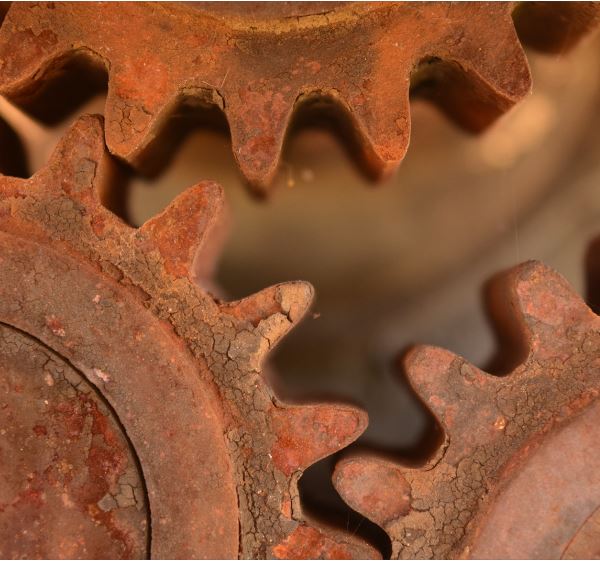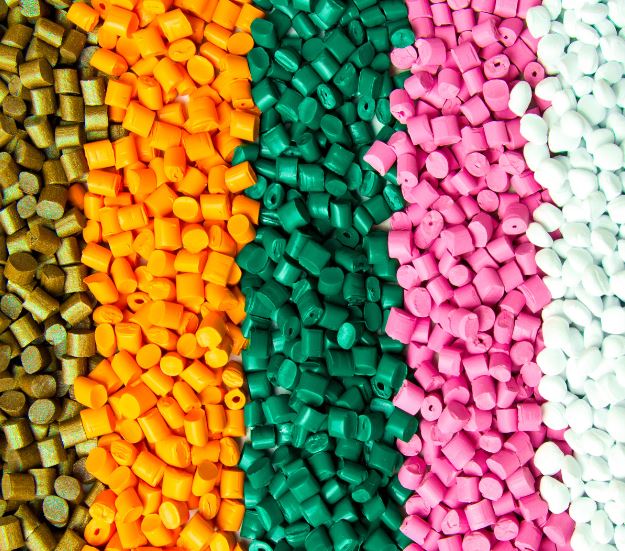Due to its ability to regulate humidity levels more effectively than refrigerant style dehumidifiers, the use of desiccant dehumidifiers has grown exponentially since their invention in the 1950s. Now, many industries have adopted this technology to improve their processes and products. In this article, I will explore some of the many usages of desiccant dehumidification.
Combatting Corrosion
Every material is subject to corrosion, meaning each substance undergoes a transformation through chemical reactions. The presence of moisture can speed up chemical reactions that are catalyzed by oxygen and heat. Desiccant dehumidifiers are used to guard materials from less noticeable yet expensive forms of corrosion by taking out the moisture that might come into contact with the material’s surface. Several of the areas where desiccant dehumidifiers are put to use in order to prevent corrosion include:
catalyzed by oxygen and heat. Desiccant dehumidifiers are used to guard materials from less noticeable yet expensive forms of corrosion by taking out the moisture that might come into contact with the material’s surface. Several of the areas where desiccant dehumidifiers are put to use in order to prevent corrosion include:
- Keeping boats and ships in storage
- Manufacturing lithium batteries
- Safeguarding computers and other electronics
- Securing ammunition
- Ensuring military and civilian avionics are secure
- Ensuring box beams and metal tanks are well protected
Stopping Condensation
When moisture in the air touches a cold surface, water droplets will form on it like “sweat” on an ice-cold glass of beer on a hot summer day. This can lead to a wide range of issues. For example, customers at a grocery store might not be able to see the frozen items in a refrigerated cabinet with a glass door, resulting in a possible decrease in revenue. On the other hand, condensation on the inner parts of an aircraft when flying from a cold high altitude to a more humid location can speed up corrosion, shortening the air frame’s life. To prevent these types of issues, dehumidifiers are often installed to keep the cold surfaces dry. Common applications of condensation avoidance include:
- Storing of cold and frozen items
- Ice arenas
- Preparation and covering of surfaces
- Forming by injection
- Inside of aircrafts
Protection Against Mold and Fungi
 Mold and fungus can be seen in nearly all materials and can stay inactive for a long time, even centuries, in the absence of moisture. Nevertheless, when moisture and a food source are present, they will proliferate promptly. Desiccant dehumidifiers help to reduce the humidity in the air, thus inhibiting the growth of mold and fungus. Included in the mold and fungus prevention applications are:
Mold and fungus can be seen in nearly all materials and can stay inactive for a long time, even centuries, in the absence of moisture. Nevertheless, when moisture and a food source are present, they will proliferate promptly. Desiccant dehumidifiers help to reduce the humidity in the air, thus inhibiting the growth of mold and fungus. Included in the mold and fungus prevention applications are:
- Storing of grain, seeds, and bulbs
- Processing of food and meat
- Brewing and keeping of wine and beer
- Preservation of archives, libraries, and museums
- Manufacturing and stocking of fabrics and textiles
Preventing Moisture from Re-accumulating
No matter what material it is, virtually every substance has a tendency to absorb moisture. Even plastic resins such as nylon can absorb 6-10% of their dry weight in water vapor. In certain products, moisture gain can alter vital measurements similar to thermal expansion or even make products that would be able to flow freely adhere to each other. Desiccant dehumidifiers are proficient in managing humidity levels in colder temperatures and have been applied extensively to avoid moisture absorption in the following uses:
- Containers for fertilizers and their storage
- Transferring flour, plastic and powder
- Sealing and packaging of sugar and powdered drinks
- Production of semiconductors
- Creating and enclosing pills
The Process of Dehydrating Products
In recent years, the use of desiccant dehumidifiers for product drying has become increasingly popular as they are able to maintain product quality while still providing a fast processing speed. This means that these dehumidifiers can now be applied to a wider range of product drying applications, which include:
- Preparing meals with meat, fish, pasta, cheese, and veggies
- Manufacturing plastics, nylon, and polystyrene
- Chromatography-related components
- Pharmaceuticals and food-based powder products
Dry Cooling
When it comes to air conditioning systems, the use of cooling coils to manage air temperature and humidity is a commonly employed and effective method. In certain cases, adding a desiccant dehumidifier to the system can be beneficial in order to separately control humidity from air temperature. This is especially true when the moisture levels are higher than the sensible heat loads, or when they peak at distinct times. For example, a building can utilize 65°F outside air for cooling, but still require dehumidification due to the moisture the air carries. The applications for dry cooling include:
- Medical institutions and long-term care facilities
- Accommodations and fitness centers
- Grocery stores and shops
- Government edifices and halls
Short-Term and Long-Term Alternatives
If you need a desiccant dehumidifier for a short-time or for a more permanent solution, Eldridge can help you choose the correct size and type of unit. Rentals are available through Industrial Drying Solutions, complete with installation and service. For those requiring a longer-term solution, Innovative Air Technologies has a whole line of desiccant dehumidifiers available.
